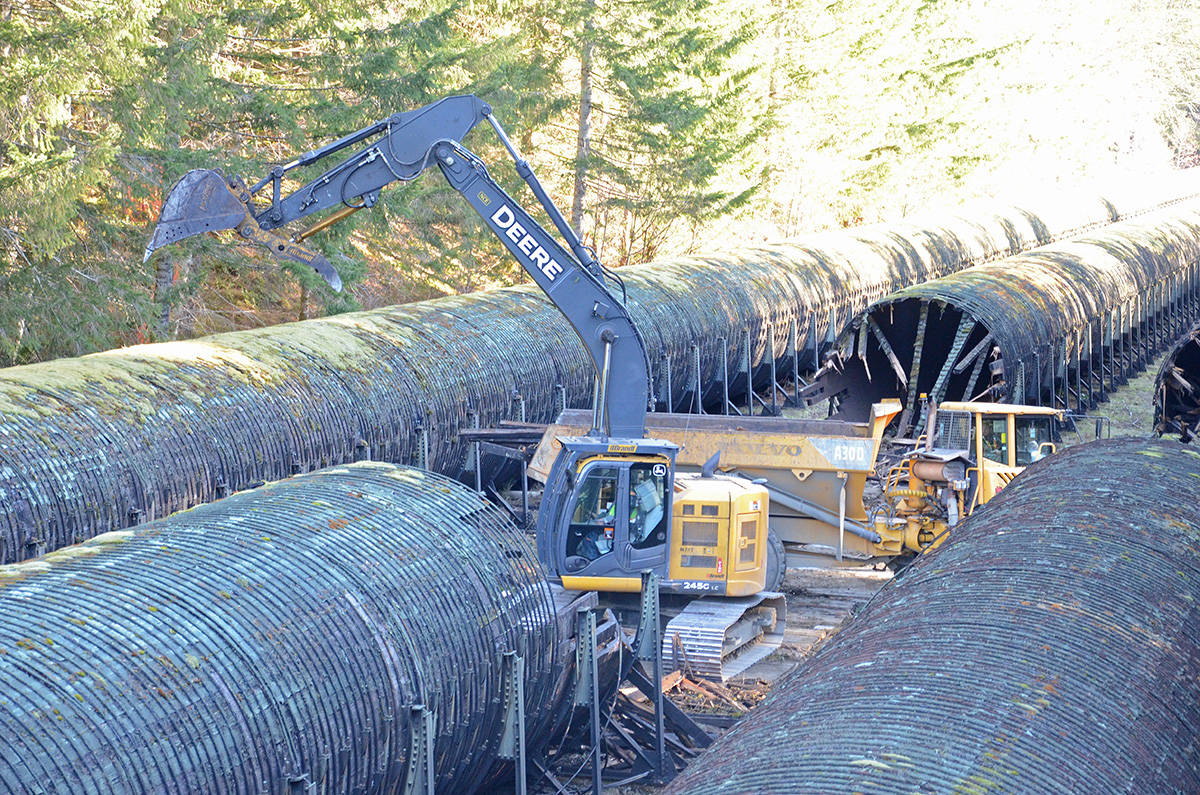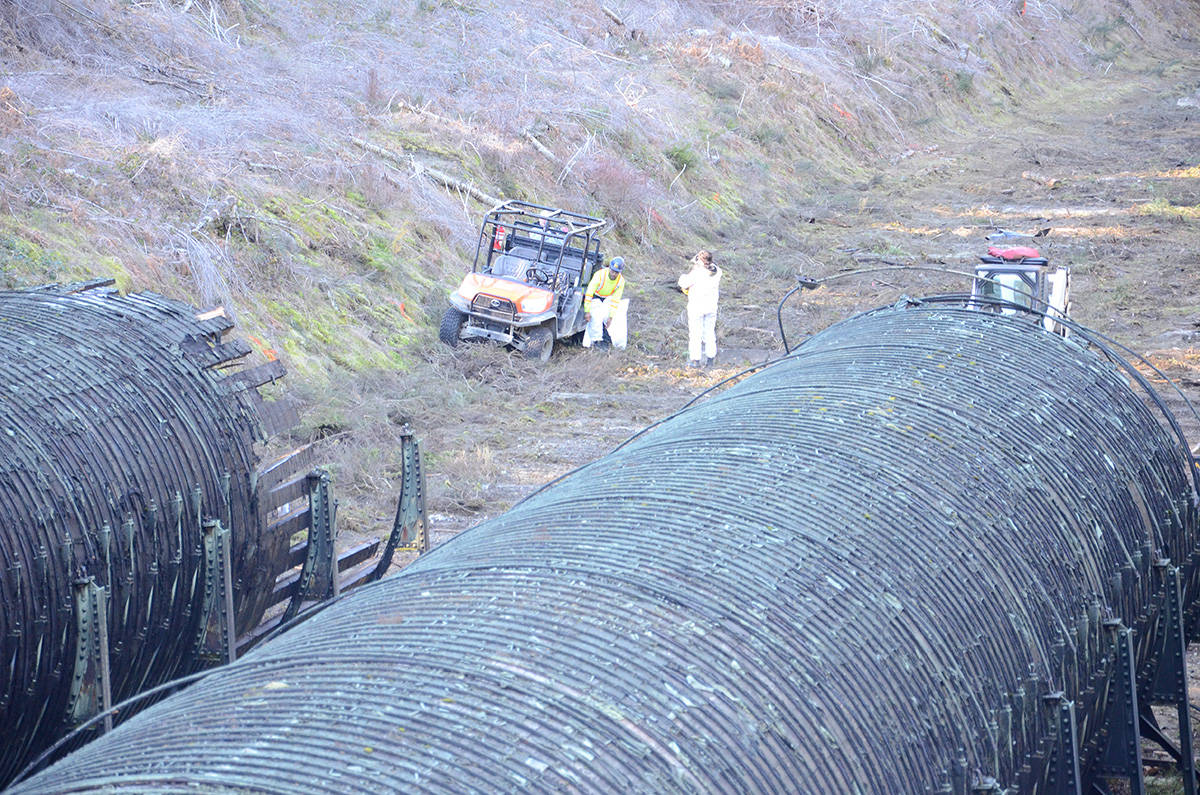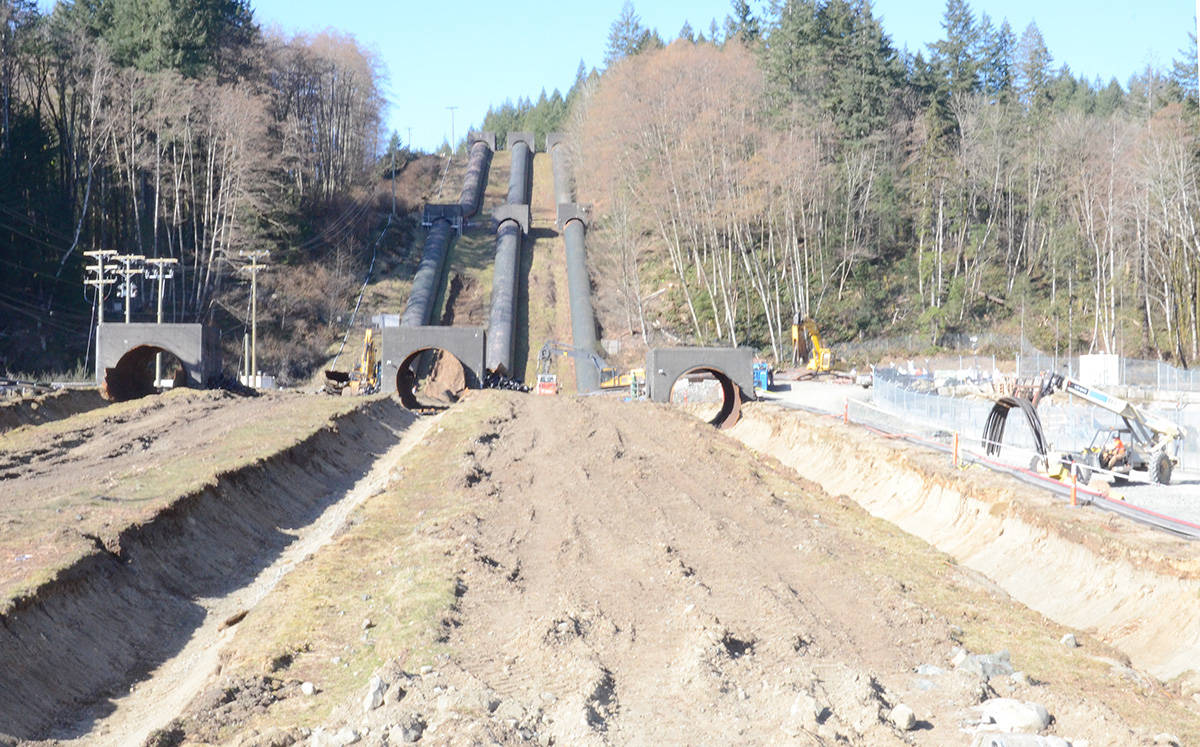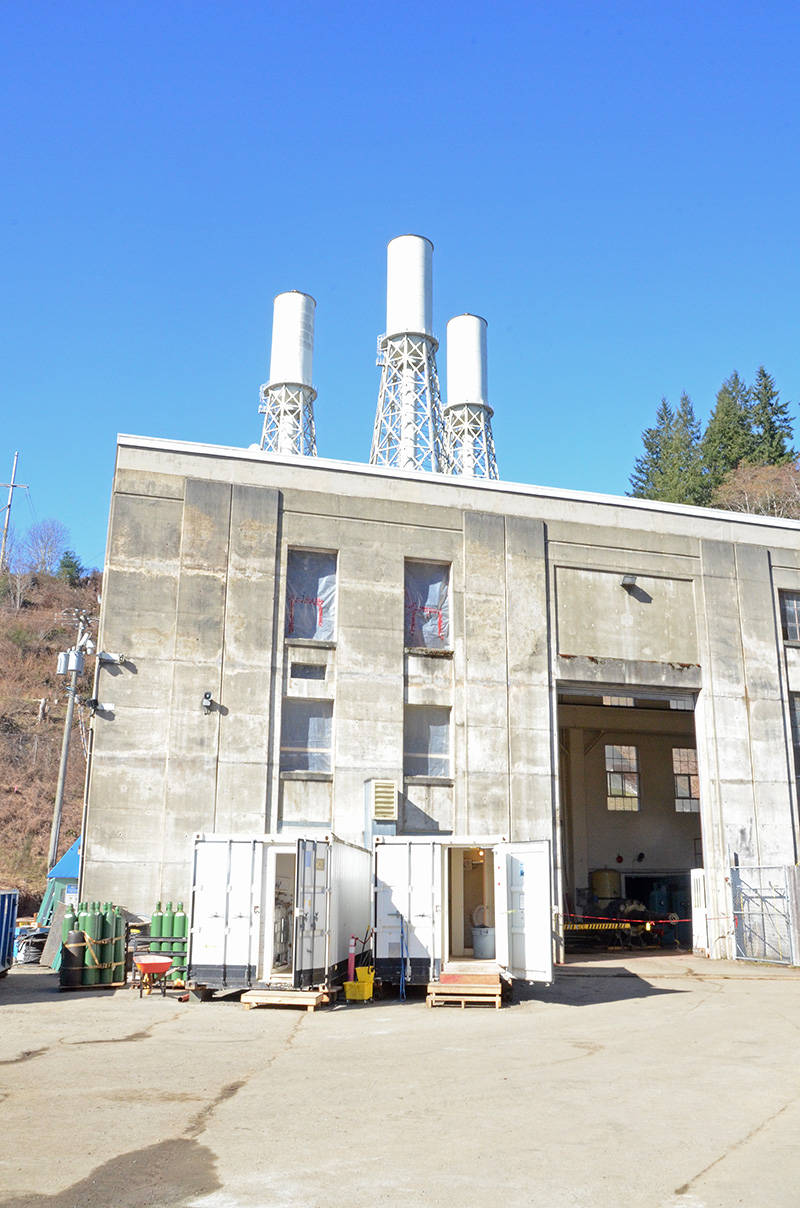Work to remove the old penstocks at the John Hart Generating Station near Campbell River is now underway.
The old wooden penstocks, though, lasted far longer than anyone ever expected. The first one was installed in 1947, the second in 1949 and the final one in 1953.
RELATED STORY: John Hart Generating Station officially fully operational
“They’re only supposed to last 40 years, and we got 71 years out of it,” says BC Hydro stakeholder engagement advisor Stephen Watson. Work to decommission the old site has now begun, following the opening of the new generating station in late 2018.
“We’re in the process of removing the old facility,” Watson says.
RELATED STORY: Last two old generators at John Hart Dam shut down
While many people visit the area to take in Elk Falls or walk on the suspension bridge, the penstocks themselves have become a bit of a landmark for visitors.
“The fact that they’re wood and they were made in the 1940s,” Watson says. “You don’t see these kinds of structures very often.”
Decommissioning work started in January and will likely run through the end of summer. Between the different contractors, Watson says there are still about 125 people working on the old site or adding finishing touches to the new site.
This week, Watson took media on a tour of the work at the old site. The penstocks are 3.66 metres in diameter and were made from old-growth Douglas fir. The new generating station runs water through underground tunnels instead of the above-ground penstocks. The steel that held the old penstocks together is being recycled, but the wood, having been coated in a preservative, cannot be reused. Some visitors have asked about getting a piece, but the material has to removed.
“They’re in poor condition. They were treated with creosote, so they need to be properly disposed,” Watson says, adding that BC Hydro is considering making a replica out of Douglas fir in the same design. “That’s something we may do in the future…. There’s a lot of interest in the penstocks, and it’s nostalgic.”
Down the hill from the wood stave penstocks are the steel ones, which will also be removed. This process will be different, as there were materials such as lead paint used. In all, 1.8 kilometres of penstock will come out, of which 1.1 kilometres is wood stave.
“This is kind of the focus for a lot of people,” Watson says. “We get a lot of attention and reaction.”
Later this spring, two of the three surge towers on the site will come down as well and the old powerhouse will be taken down to the ground level. After this, a trail will be re-established at that site.
The long-term plan is to return the area to nature, with work beginning after some soil remediation on the stretch that underlay the penstocks. Eventually, the site will blend into the surrounding Elk Falls Provincial Park.
“Over a period of decades this area will be allowed to return to forest,” says Watson.



